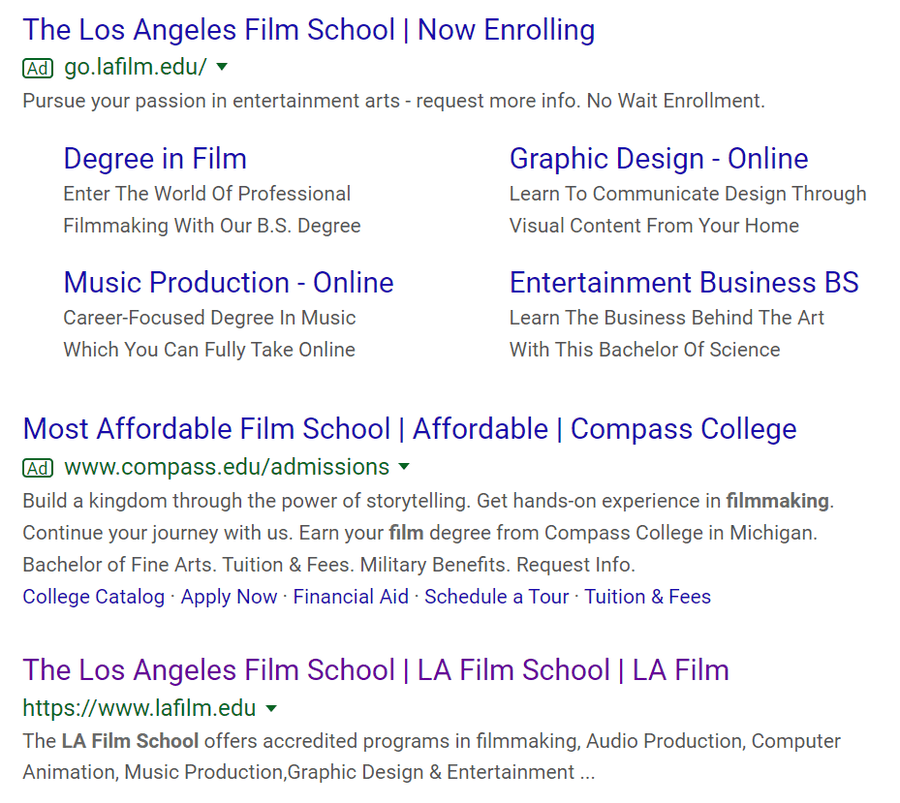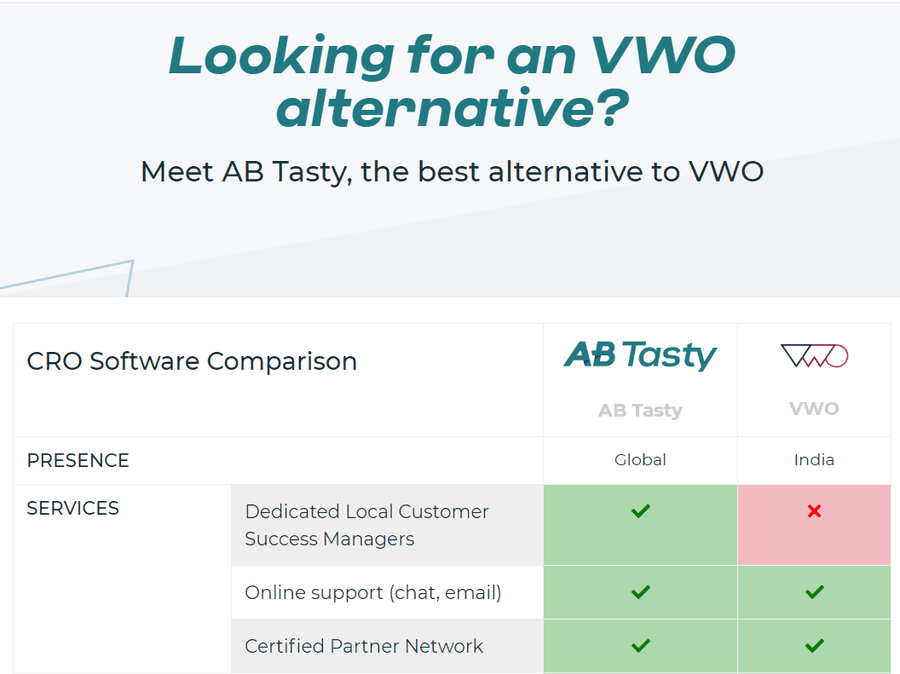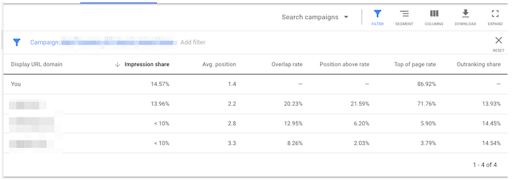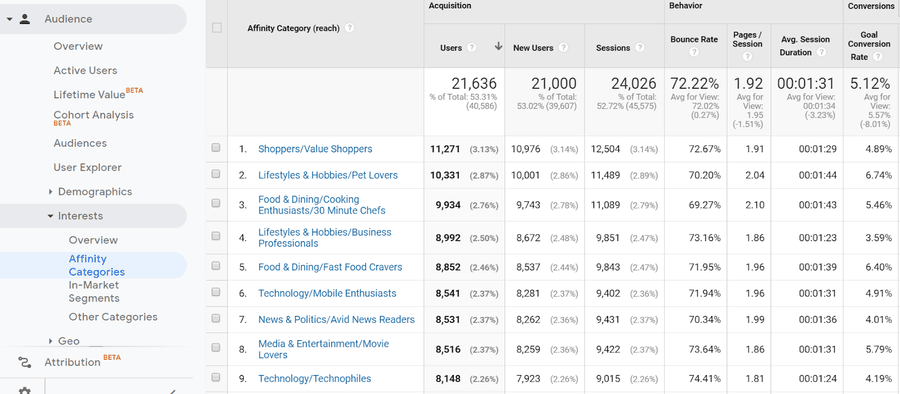Everything You Need to Know About Competition in Google Ads
Competition on Google has risen over the years as more companies invest in Google Ads. If your business is in a competitive field, you’ll want to make sure that your ads on Google show first, on top of your competitor ads. Click through rates on your ads can decrease by up to 2% between the first and second position and another 2% between second and third position. Google has definite rules and policies that determine what you can and cannot do to target your competitors and compete with them.
Getting caught on the wrong side of Google’s rules can cause your campaigns and ads to be disapproved or even your account to be suspended. We want to help you avoid these pitfalls so here are some ways to compete with other businesses in your verticals:
1. Avoid trademark violations in your ad copy
If you have a trademark on your business name in any country, competitors cannot use your name in their ad copy in that country. If they are using your name, their ads can be disapproved and their account can even be suspended if they persist. If you see a competitor using your name in their ads and you have your trademark registration number in that country, fill out this Google Ads Trademark Complaint Form online.
Google’s Trademark Violation team will investigate the ads. If they are found to be violating the trademark, the ads will be disapproved, and the trademarked term will be added to the Google system to automatically disapprove ads in the future using that term. To fill out the form, you will have to get the click ID of the ad that is violating the trademark. You can get this by right-clicking on the headline of the ad and then “copy the link address”.
Conversely, there are some ways to work around the trademark. You can use alternative spelling or use the trademark name in your URL on the ad without consequence.
For example, this ad above follows Google’s trademark rules. The trademark is “AB Tasty.” This is more difficult for the Google team. You can still submit it as a trademark complaint but they may or may not disapprove of it in their ad platform. To avoid issues with trademark violations and possible lawsuits, it is best not to use your competitor’s name in your ad copy.
2. Competitor campaigns
You can’t use your competitor’s trademarked name in your ad copy. However, you can bid for your ads to show up when someone searches their name on Google. Your ads can show up before their organic search result and you will have the chance to convince someone that your product is better than theirs.
If you show ads for searches for your brand name, competitor’s ads will not be able to rank above yours due to quality score. Not every company targets its own brand name, relying on their free organic listing to show at the top of the page. For this reason, it is important to monitor ads in Google Search that show up before your organic listing if you are not bidding for close to 100% impression share on your brand name. Competitors may be stealing your customers.
If this school was not bidding on their own brand name, their competitor would have the first result in Google even though the searcher was looking directly for them. On a mobile phone, this is especially important, where a single listing can take up the entire screen. Google has the option to show as many as 5 ads above the first organic search listing. For this reason, it is essential to spend money on ads targeting your own brand name if you are in a competitive field. The best part about brand campaigns is that you can often bid very low on your brand name, sometimes half the amount or less than you bid on non-brand keywords, since your quality score is so high for your brand.
Just as your competitors may be bidding on your brand, you should bid on your competitor’s names. People who are ready to purchase from your competitors are a very qualified audience to become a customer of yours. Customers often research multiple brands in the consideration phase of the sales funnel. By showing your ad while they search for your competitor, you position yourself as an alternative and have the chance to convince them to go with you instead.
3. Competitor comparison on your website & landing pages
The best way to improve your quality score is to increase the click-through rate on your ads and also to use the keywords that you are bidding on in your ad copy and landing page copy. Obviously, with trademark violation rules, you cannot use competitor names in your ad copy. However, you can use phrases like “Compare Us to the Competition” or “Better than Leading Competitors.” And you should also include value propositions in your ad that sets you apart from the competitor that you are targeting. This will help increase your click-through rate without violating trademark rules.
In competitive fields, it is also helpful to set your brand apart from your top competitors on your landing page. By using your competitor’s name on the landing page, it signals to Google that your content is relevant to that search. And consumers who are clicking on your ad after searching your competitor’s name are ready to compare the two companies. Brands often use comparison tables like this on their landing pages:
This clearly highlights the differences in services provided by each brand. Note: the actual table is much longer and has detailed sections for each platform. This table lets the consumer visually compare both companies and also has a simple call-to-action to sign up or get more information. Taking these steps in your competitor campaigns will increase your quality scores, click-through rate, and conversion rate and decrease your costs while staying competitive in your field.
4. The cost of competition on google ads
Competition does drive up ad costs on Google Ads. Along with being forced to spend ad money on its own brand name, competition increases the cost per click as each company tries to out-bid each other. This is especially true if 2 or more competitors have a large ad budget and are attempting to show their ads in the top position on close to 100% of searches for the same keywords.
You can look at your Auction Insights report for your account as a whole, or each campaign, to see who your competitors are in ad spend, and their impression share and average position to get an idea of their advertising budget compared to yours and how aggressively they are bidding. The report can also show you how often their ads show above yours and at the top of the page.
Before getting in a bidding war with another competitor, there are a few other factors that can help you control costs.
First, take a look at your customer data. What is the cost per conversion that you are willing to accept for your ads? Factor in future purchases, how long a customer normally spends with your company, and if there are opportunities to cross-sell or up-sell to them. Overall of your ad campaigns, that is the number that you want to stay below. However, not every campaign should be expected to stay below that target. Campaigns may target different parts of the tunnel. The metrics and balance of the whole account overall platforms should meet the target goal.
Second, balance your ad spending between high and low funnel campaigns. If a consumer is already aware of your brand, they are more likely to convert when they see your search ad and are more likely to already be searching for your company.
As we already mentioned, searches for your brand are a lot cheaper than non-brand or competitor searches to show your ads. And high-funnel ads on platforms like Google Display, YouTube, and social networks are much cheaper in cost per click than the bottom of funnel search ads. Having a balance of ads across the funnel will make it easier to grow your brand awareness and increase the value of those low funnel search ads.
High funnel campaigns may have a higher cost per conversion and a lower conversion rate than your Google search ads, especially your Google brand search ads. But they contribute to general awareness about your brand and lead to those low funnel conversions. To outplay your competitors in Google Ads, you must have a full-funnel approach to bring down your final costs and increase your conversion rate in Search.
The last step is in optimizing your targeting. Gather as much customer data as possible to find your best targeting for potential customers. The better you target your ads, the better your conversion rate will be. Google Analytics is a good place to start to gather Demographic, Interest, and Behavior data on your customers.
Testing new targeting and watching for new tools on Google will help keep you in front of competitors. Test automated bidding systems against each other and against manual bidding to find the one or ones that work best for each campaign and lead to the lowest possible cost per conversion. When testing automated bidding, don’t get hung up on the cost per click. That does not matter as much as cost per conversion and the lifetime value of the customer.
5. Playing dirty
Unfortunately, some competitors do illegal and unsavory things sometimes to make life harder on your business. Click fraud is one of the most common occurrences of this in Google paid ads. Competitors can pay for bots online to click your ads, which spends your budget. Google, Facebook, and all other major advertising platforms have guards against this that are getting updated frequently. If you do suspect that you have bot activity that is draining your resources, there are companies and products online to help prevent and monitor click fraud by tracking and blocking suspicious IP addresses.
Staying ahead of the competition on Google without increasing spend exponentially can seem almost impossible. These tips can help you stand out among the crowd with a limited budget and get the customers, which is the goal. Partner with a digital marketing agency that can help with competitor analysis and strategy.
—
Looking for strategies to keep your blog fresh? Try using our 6 Strategies to Generate SEO-Focused Blog Ideas!
If you need a little more advice with your SEO or search & social advertising, contact us! We love to help!

Emily Lutz is from Kalispell, Montana and has been camping more times than she can count. She geeks out over musicals and the TV show Firefly (yes, she’s on some chat sites). Before joining Perfect Search, Emily was a zookeeper for ten years.





